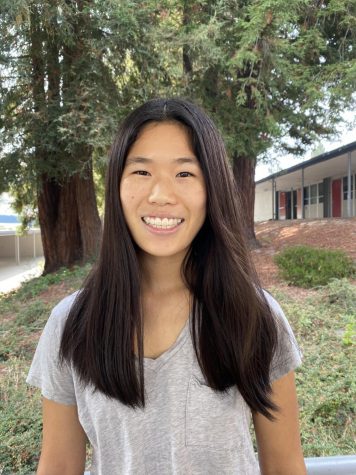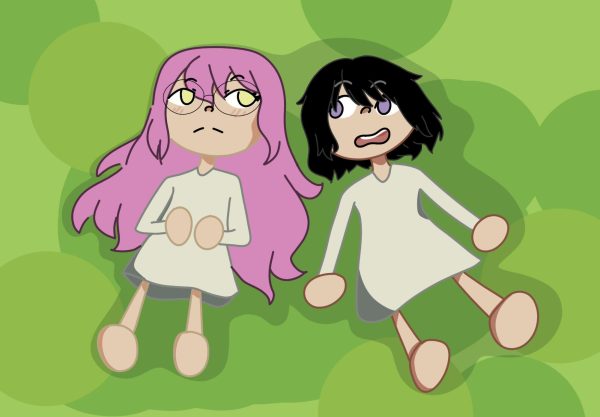Anti-Asian Hate Incidents Warrant Attention
This article was updated on April 12, 2021 to reflect recent events.
“Yesterday was a really bad day for him, and this is what he did.”
These are the words of Cherokee County Sheriff’s Captain Jay Baker after 21-year-old Robert Aaron Long murdered 8 people at 3 spas and massage parlors in the Atlanta area on March 16. His comments are not just incredibly disturbing—how can you reduce the murder of 8 people, 5 of them Asian women during a period where anti-Asian hate incidents have skyrocketed, to a “bad day”?—but also highlight the long, painful history of overlooking Asian American racism.
Last April, I wrote an article called “Pandemic Highlights History of Racism towards Asian Americans.” As this title suggests, I discussed the long and tumultuous history of Asian American discrimination, from the Chinese Exclusion Act of 1882 to the segregated “Oriental” schools in San Francisco. I discussed the Japanese American internment during World War II and later how the COVID-19 pandemic exacerbated racism as former President Trump and other politicians repeatedly referred to the virus as the “Chinese virus” and “kung flu.” During this time, many companies, like Lululemon, fell into hot water as their employees posted racist images linking bats with Chinese culture.
Unfortunately, in the year since the pandemic began and this article was published, anti-Asian attacks have only worsened. The Atlanta shootings may provide the clearest, most haunting evidence of this, but the amount of hate and violence that the Asian American Pacific Islander (AAPI) community has experienced in the past year has been devastating. Every day, I feel like I read a new story about an Asian elder in the Bay Area who was punched or maimed or shoved, a business in Chinatown ransacked and looted, or an Asian woman robbed and kicked. It’s heartbreaking, draining, and terrifying to constantly see people who look like my grandparents, parents, cousins, aunts, uncles—and even myself—targeted and attacked.
According to Stop AAPI Hate, an organization founded last year to track COVID-19 related discrimination, there were 2,808 firsthand accounts of anti-Asian hate from March 2020 to December 2020. 708 of these attacks occurred in the Bay Area alone.
In San Francisco, 84-year-old Vicha Ratanapakdee was senselessly knocked to the ground and died from his injuries, as reported by CBS. ABC7News reported that a racial slur was graffitied near the Chinese American International School in San Francisco; additionally, a man was pushed to the ground in Oakland Chinatown.
In New York City, ABC7News published a story about 61-year-old Noel Quintana, whose face was slashed with a box cutter in a Manhattan subway station. Slashed with a box cutter. Also in New York City, a 65-year-old woman was assaulted outside of a Manhattan apartment building—and the security guards merely stood by, watched, and shut the door.
According to The Queens Chronicle, a New York City-based newspaper, the New York Police Department found a 1900% increase in anti-Asian hate crimes last year.
The pandemic has increased anxiety and fear for many Asian Americans, but this type of scapegoating is not new—for example, it happened in 1900, when San Francisco Chinatown experienced an epidemic of the bubonic plague that led people to call for the neighborhood to be burned down and officials seized Chinese residents on the streets. The “Yellow Peril” that swept through the United States in the 19th and 20th centuries was largely a product of the pervasive view that Asian Americans were a “threat” and “unclean and unfit for citizenship in America,” according to PBS.
Due to stereotypes and the model minority myth, many people leave out Asian Americans when addressing instances of racism. Last fall, North Thurston Public Schools in Washington state even excluded Asian Americans from their list of students of color, as reported by Northwest Asian Weekly, and though the district has since apologized, this sets a dangerous precedent: it denies the racism and microaggressions that Asian Americans face, ignores the diverse experiences of the Asian American community (income inequality in the country became greatest among Asians in 2018, according to the Pew Research Center), and minimizes the need to mobilize and fight discrimination.
The mainstream media remained largely silent on this issue at the beginning. For example, I subscribe to The New York Times’ daily briefing, for weeks, I read headlines about opera singers in England helping COVID-19 patients recover and Naomi Osaka defeating Serena Williams in the Australian Open semifinal—but did not see a single one about anti-Asian hate crimes. On TikTok, some creators have tried to spread awareness, and their comment sections were inundated with responses like, “Wow, I had no idea this was happening.”
While more attention has been brought to the staggering number of anti-Asian hate incidents, particularly after the tragedy in Atlanta, I think that it is upsetting that it took a series of such horrific events for people to really start to take notice.
I believe that it is important for the media to cover these stories and publicize them so that people realize the extent and severity of Asian American racism. I also believe that it is important for us to acknowledge that racism is alive—and raging—even in the Bay Area. We cannot use our often-progressive politics as a facade or pretense to deny or overlook instances of hate.
The perpetrators of some of these incidents may be members of the BIPOC community, but it’s one thing to hold people accountable and an entirely different thing to be racist as you do so. Unfortunately, anti-Blackness is rampant in Asian communities, and it is something that needs to be addressed. I believe that we must use this opportunity to build solidarity and alliances across all social cleavages—race, class, religion, gender, sexual orientation, etc. However, we absolutely cannot fight ignorance with more ignorance.
It is only through confronting racism that we will truly be able to fight it; it is only through standing in solidarity with other minority groups that this will be able to happen.
While there are serious measures that need to be taken to address the struggles of the AAPI community, here are some things that you, as an individual, can do to support us:
- Reflect on your biases, words, actions, and thoughts. Even if your Asian friend says that “kung flu” isn’t offensive, that rhetoric is powerful, has proven to be deadly, and upholds a racist system. Have you said someone’s food smells disgusting, or asked if they’ve eaten dogs, or made “ching chong” jokes? You might think it’s funny, but it’s hurtful and wrong. I think that most everyone is redeemable, so if you realize that you’ve contributed to these stereotypes, make a conscious effort to dismantle those ideas.
- Read and learn about the history of Asian Americans. Our history is simply American history but it has been glossed over so much that the community is often forgotten about. If you want a broad overview of the Asian American experience, I recommend starting with The Making of Asian America: A History by Dr. Erika Lee. Education is a powerful tool.
- Support your local Asian-owned businesses. Show them that you stand by them and don’t buy into the harmful stereotypes and rhetoric.
- If you see or hear something happening, please speak up. Whether that’s at school, on Instagram, or in a grocery store, let the people who harbor these racist, xenophobic thoughts know that they are outnumbered.
And above all, please include Asian Americans in your activism.
Your donation will support the student journalists of Campolindo High School's The Claw. Your contribution will allow us to produce more issues and cover our annual website hosting costs.

Amanda Young, a senior at Campolindo, enjoys raising awareness for social justice issues and being active in her community.
She is an intern with Stop...

